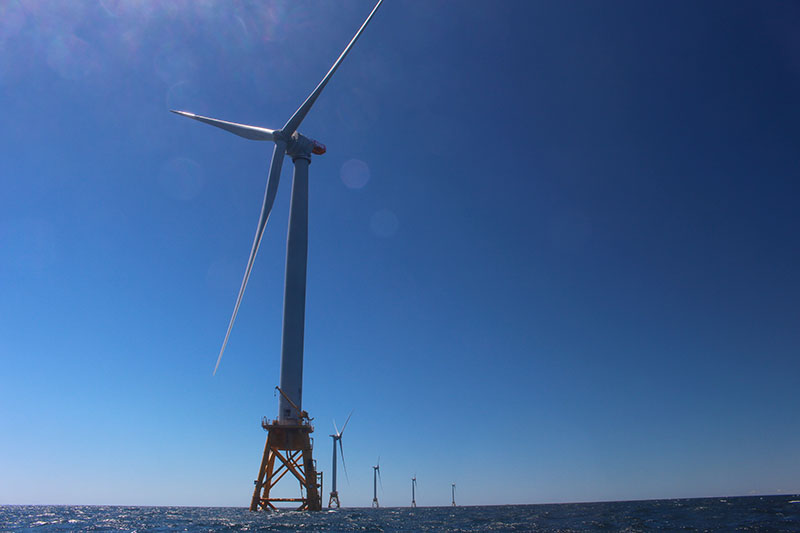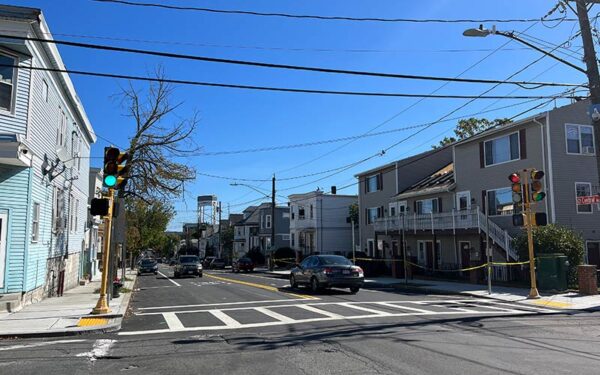
The nation's first offshore wind farm off the coast of Block Island will power 17,000 Rhode Island homes using clean, renewable energy.
For three years now, Big Gas has been spinning tall tales aimed at scaring you and me – and especially our local politicans – into locking in our addiction to dirty, polluting natural gas for decades to come.
If these tall tales are to be believed, we New Englanders are facing an imminent threat of spiking electricity prices and rolling blackouts.
Why? Because, says Big Gas, we don’t have enough natural gas to meet demand for both heat and power during the winter.
Their solution to this pending crisis? Building big new natural gas pipelines into the region, of course.
And who does Big Gas say should pick up the billion-dollar tab for these new privately owned pipelines? All of us, through a tax on our electricity bills, for decades to come.
Yet, here we are. Temperatures have again dropped, there’s a whole lot of snow blanketing New England. The lights are still on, the heat is still pumping, and electricity prices are holding steady at historic lows.
Frankly, this Big Gas mantra is getting old. In this era of “alternate facts,” this tall tale ignores the facts on the ground and the very real progress our region has made over the past few years to avoid price spikes, keep the lights on, and tamp down our emissions of climate-damaging pollution. Let’s sort out the facts from the hype.
FACT: Electricity prices have gone down, not up.
Winter electricity prices in 2015–16 plunged 80% compared to the winter before (when prices were already down 50% compared to the Polar Vortex winter before that). For our current winter (2016–2017), prices are on track to be a bit higher than last year, but will still be historically low, especially when compared to three years ago.
FACT: Demand for electricity is declining, too.
These price drops aren’t aberrations. After the extreme winter of 2013–14, investments in energy efficiency, solar power and other clean resources lowered our overall demand for electricity, which in turn lowered the electric sector’s demand for natural gas.
FACT: We already have more gas available for when we need it most.
Demand for natural gas is highest only on the very coldest days of the year, when we need it for both turning up the thermostat and for electricity. Since 2013, gas suppliers have better coordinated the availability of gas with those few times of highest need. That has allowed our region to use our existing pipelines more efficiently. Also, more strategic use of liquefied natural gas (LNG) has provided an additional supply of gas on existing underutilized pipelines. What’s more, Spectra Energy just completed its AIM pipeline expansion, which will increase the gas supply to New England by almost 10%, and help to keep prices down for years.
FACT: Oil prices are down, and they’re going to stay that way for now.
There’s no question that our plummeting electricity prices are due in part to lower oil prices in recent years. That trend of lower oil and gas prices is expected to continue over the next few years, even with the recently agreed-to ramp down in OPEC oil production.
FACT: We have time to get clean energy resources online – and we’re starting now.
All of the above factors have given us time to implement more clean energy solutions across New England – which will avoid the long-term fossil fuel commitments that Big Gas is peddling. Massachusetts and Connecticut have committed to buying enough clean energy to power more than 800,000 homes and businesses – that’s equal to 11 percent of the total homes and businesses in New England. And, ISO-New England, the regional grid operator, is exploring market adjustments that could provide more incentives for clean energy and disincentives for further development of polluting gas pipelines and power plants.
FACT: Natural gas is not “clean.”
Methane, a byproduct of fracking that is also emitted from natural gas pipelines, is a more potent greenhouse gas than carbon dioxide. And data shows that new gas power plants can emit more than 20% more carbon than the average of existing power plants in New England. In fact, an ISO-New Engand report shows that carbon pollution from the region’s electric sector actually increased in 2015 – for the first time in years – largely because of increased emissions from gas-fired power plants.
We need to stop inflicting irreversible damage on our climate and that means choosing energy sources that spew the least amounts of carbon pollution – or, better yet, none at all. Natural gas doesn’t fall into either category.
It’s past time to call out Big Gas on its hype and its false advertising. Facts matter, especially when it comes to the climate our children and grandchildren will inherit. Local clean energy is here now and there’s no denying the benefits it brings to our health, our climate, and our economy. Our energy investments today must be in more clean energy, not polluting pipelines.



